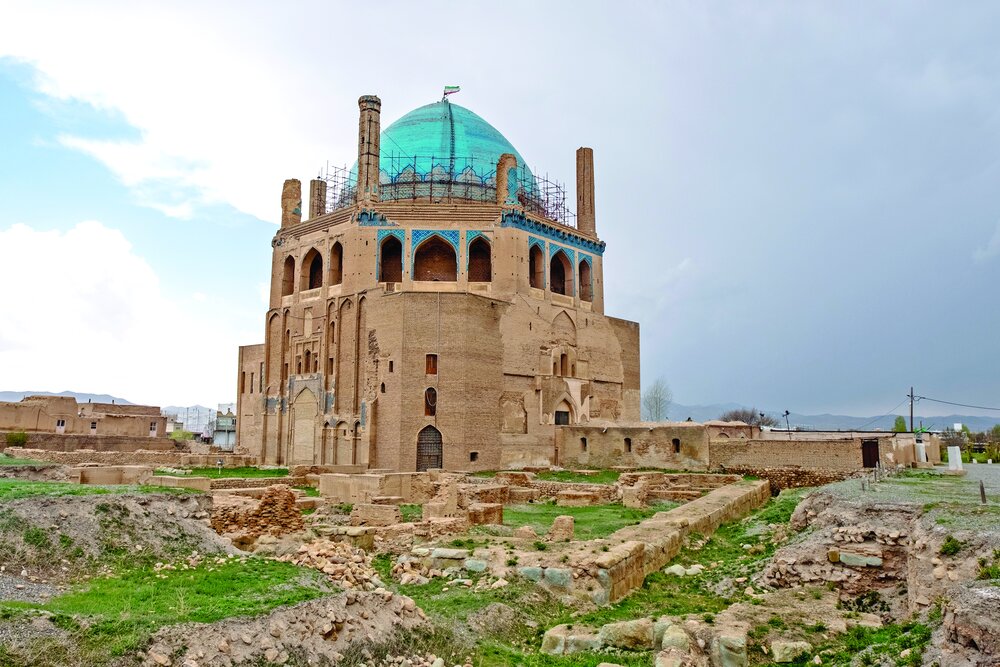UNESCO-inscribed Soltanieh renovates facilities for tourism

TEHRAN – Authorities of the UNESCO-registered Soltanieh, which supports the third-largest brick dome in the world, have commenced work to build or upgrade facilities at the ancient site.
Meaning “Town of the Sultans”, Soltanieh was briefly the capital of Persia’s Ilkhanid dynasty (a branch of the Mongol dynasty) during the 14th century. It is situated in Zanjan province, northwest Iran.
The project is aimed to amend tourism routes, landscape designs, electrical equipment, air conditioners, worn-out bricks, and tiles to name a few, the provincial tourism chief said on Sunday.
Renovation of access routes and facilities of this World Heritage site is one of the priorities, Amir Arjmand said.
After the easing of coronavirus restrictions, the number of visitors to the historical monument has been on the rise, he said.
The massive dome is the earliest extant example of its type and became an important reference for the later development of the Islamic dome. Similarly, the extremely rich interior of the mausoleum, which includes glazed tiles, brickwork, marquetry, or designs in inlaid materials, stucco, and frescoes, illustrates an important movement towards more elaborate materials and themes.
The 14th-century building, which is also famed as the Mausoleum of Oljaytu, is highly recognized as an architectural masterpiece particularly due to its innovative double-shelled dome and elaborate interior decoration. The very imposing dome stands about 50 meters tall from its base.
Its interior has undergone various rounds of restoration. However, its decoration is such impressive that scholars including A.U. Pope described it as ‘anticipating the Taj Mahal’. It is the earliest existing example of the double-shelled dome in Iran.
According to UNESCO, the Mausoleum of Oljaytu is an essential link and key monument in the development of Islamic architecture in central and western Asia. Here, the Ilkhanids further developed ideas that had been advanced during the classical Seljuk phase (11th to early 13th centuries), during which the arts of Iran gained distinction in the Islamic world, thereby setting the stage for the Timurid period (late 14th to 15th centuries), one of the most brilliant periods in Islamic art.
UNESCO says, “Excavations carried out in the 790-ha Mausoleum of Oljaytu property have revealed additional vestiges of the old city, and a large part of this property has retained its archaeological character. As the ancient capital of the Ilkhanid dynasty, Soltanieh represents an exceptional testimony to the history of the 13th and 14th centuries in Iran.”
A great-grandson of Hulegu, founder of the Il-Khanid dynasty, Oljaytu was a Mongol ruler who, after dabbling in various religions, adopted the Shia name Mohammed Khodabandeh.
AFM

Leave a Comment